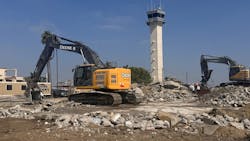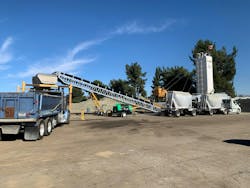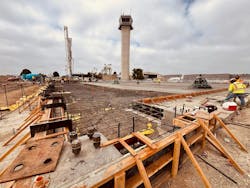Five Things You'll Learn
- Federal law mandates that all airport revenue be used solely for airport-related costs, with strong legal protections against diversion.
- Local governments often impose unsupported indirect costs and misallocate funds, undermining airport financial health and transparency.
- Fuel tax diversion remains a significant issue, reducing critical funding for maintenance and infrastructure upgrades at general aviation airports.
- Delays in infrastructure repairs due to revenue diversion increase safety risks and operational costs, impacting the entire aviation system.
- Enhanced FAA guidance, private investment, and collaborative funding practices are essential to sustain airport operations and infrastructure development.
General aviation airports are built on the principle of self-sufficiency. They generate their own revenue, reinvest in infrastructure and provide critical services to communities. Yet, that foundation is at risk when airport revenue is diverted for non-aviation purposes or when indirect costs charged by local governments quietly undermine the bottom line.
The safeguards that protect airports from revenue diversion are not simply policy, but are written into federal law. Under 49 U.S.C. §47107(b), when an airport accepts federal grants, it agrees that all revenue —such as rents, fees, fuel charges and concessions—must be used only for the capital or operating costs of the airport or the airport system. In simple terms, if the money is earned on the airport, it must stay with the airport.
In 1996, Congress strengthened that rule by passing 49 U.S.C. §47133. This made the restriction permanent for all federally obligated airports, and not just those accepting new grants. This section also gave the FAA clear authority to intervene when airport money is misused.
Together, these statutory provisions form the foundation for Federal Aviation Administration (FAA) Grant Assurance 25 that governs the use of airport revenue. It reflects lawmakers’ intent to keep aviation dollars in aviation so airports can preserve safety, reinvest in infrastructure and remain sustainable in the future.
At the local level, airports operate as enterprise systems—self-contained accounts that are meant to function separately from a city or county’s general fund. Yet, airport sponsors are often billed for indirect costs such as police, fire, information technology, payroll, legal or other administrative services. FAA policy recognizes these charges as legitimate when they are reasonable, tied to actual services and supported by a defensible cost allocation plan.
However, charges that are not supported by actual services—such as blanket percentage allocations, payments in lieu of taxes or overhead without documentation—do not meet federal standards, as outlined in the FAA Airport Compliance Manual (Order 5190.6B).
For example, in a 2014 audit, the U.S. Department of Transportation Office of Inspector General found that Los Angeles World Airports had allocated approximately $8 million of Los Angeles International Airport revenue to cover Los Angeles Police Department services over a five-year period. In this case, auditors concluded the documentation was insufficient to demonstrate compliance with federal requirements.
Additionally, in 2016, Santa Monica Municipal Airport became the focus of a Part 16 complaint. Tenants and aviation groups alleged that the city had built up a surplus of nearly $13 million by fiscal year 2018, rather than reinvesting the money back into the airport.
The complaint also pointed to undocumented loans between the city’s general fund and the airport enterprise fund, excessive interest charges and leasing practices that produced some of the highest landing fees in the nation. In 2017, a settlement with the FAA compelled the City of Santa Monica to overhaul its rate structures, improve financial transparency and strengthen oversight—forcing the airport to correct course.
At the state level, aviation fuel tax diversion continues to pose risks for general aviation airports. For years, some states directed fuel tax proceeds into their general funds rather than reinvesting them in aviation. The FAA sought to end that practice in 2014, issuing a policy clarification that all aviation fuel tax revenue must be dedicated strictly to aviation purposes. States and localities were given until December 8, 2017 to comply. Yet enforcement has been inconsistent and the problem remains.
When fuel tax dollars are redirected or reduced for non-aviation purposes, general aviation airports lose critical funding for maintenance and infrastructure. The result is a fragile financial system where airports must raise fees on tenants, users and operators to make up the difference. This undermines the very self-sufficiency that enterprise systems were designed to protect.
With more than 240 public use airports, California illustrates the challenge. For many general aviation airports facing steep financial pressures, indirect costs assessed by local governments consume as much as 50% of the budget. When enterprise funds are tapped this heavily, airports lack the resources to reinvest in infrastructure or provide the local matches required for federal grants.
As a result, general funds of cities and counties often end up backfilling those gaps—creating a perpetual cycle of mismanagement. Worse, it feeds a false perception among community stakeholders that airports are not paying their fair share, when in reality the diversion of funds is what destabilizes the system.
The problem is magnified at the national level. In its 2025 Infrastructure Report Card, the American Society of Civil Engineers (ASCE) gave aviation a grade of D+, citing $310 billion in projected capital needs between 2024 and 2033. Airports Council International–North America reached a similar conclusion, estimating $151 billion in infrastructure costs for its members over the same period. Both underscore the widening gap between available resources and what is required to maintain a safe, modern system.
Delays in basic maintenance compound the risks. As ASCE has warned, when airports defer runway or taxiway repairs, broken pavement or loose asphalt can damage aircraft and cause safety incidents. Revenue diversion may sound like an accounting detail, but its impact is felt on the ramp, in the hangar and at every business that depends on the airport.
Additionally, misuse of airport revenue extends beyond budgets. It can erode trust between oversight bodies such as the FAA, the Office of Inspector General, the U.S. Department of Transportation and the very airport sponsors they regulate. That erosion ultimately harms users by stalling collaboration on the improvements airports need most.
Airport sponsors require practical support—not additional regulations—to avoid placing the financial burden solely on general aviation tenants, users and operators. The solution is twofold. First, airport sponsors need clear FAA guidance on managing enterprise system budgets and setting fair rates and fees. Second, aviation leaders, government partners and community stakeholders must work collaboratively to reshape funding practices.
Competitive RFPs for long-term leaseholds also offer a path forward. Structured around capital investment and aeronautical needs, these agreements can bring private dollars into hangars, infrastructure and sustainability upgrades at no direct cost to the airport’s budget. Airports need stronger private investment to sustain operations and meet the evolving needs of users.
At its core, the issue is clear. Whether through inflated overhead charges or misdirected fuel taxes, revenue diversion and dilution undermine the financial foundation and health of airports. Addressing this challenge requires both stronger FAA guidance and broader collaboration across the aviation community. It’s time to reframe how airports are funded, managed and supported to keep them strong, sustainable and self-sufficient.
About the Author

Curt Castagna
President and CEO
Curt Castagna, President/CEO of Ascension Group Partners, serves as president and CEO of the National Air Transportation Association, member and past chair of the Los Angeles County Airport Commission, and president of the Van Nuys and Long Beach airport associations. A certified private, seaplane and instrument-rated pilot, he continues to instruct courses in aviation administration at Cypress Community College and Cal State Los Angeles.



